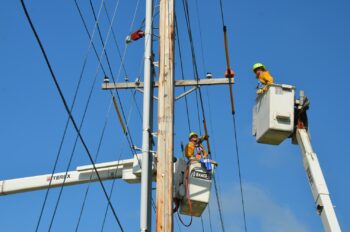
By Thomas Jennings, Head of Optimisation, Kiwi Power
Dubbed as the “greenest year on record”, 2020 saw a string of net-zero achievements including instances of 100% renewable settlement periods. The grand finale on Boxing Day saw wind from Storm Bella contribute over half (50.7%) of the UK’s daily electricity.
Though undeniably challenging, 2020 was a real catalyst for flexible distributed energy. With the sudden depression of electricity demand by up to as much as 20% and the continued high penetration of renewables coming onto the grid, 2020 provided a looking glass into what the future holds. As net zero scenarios began to rapidly unfold in real time, the vital role for flexible distributed energy resources in aiding our transition, was firmly cemented.
Inspired by a recent panel discussion I was lucky enough to lead with some key industry figures – including John Twomey – Head of Market Development at National Grid ESO, Madeleine Greenhalgh – Policy & Advocacy Manager at Regen, Steven Meersman – Founder Director at Zenobe and Hugh Brennan – MD at Hive Energy – I’ve distilled what I feel are three key lessons we can all take from 2020.
Lesson 1: Rapid change is possible
National Grid was quick to react, including introducing a new flexibility product in April targeting smaller distributed energy resources to help manage changing system conditions. Implemented in an immensely short period of time, the Optional Downward Flexibility Management service was a ‘learn-as-we-go’ response to the changes that was widely lauded by the market.
With uncertainty being the new normal, there are some important lessons that we can take to build on the initial successes of 2020. For one, the industry is very open to trialling new flexibility services but also wants some assurances in the direction of travel so that investment in flexible distributed energy can be made with confidence. Open dialogue and the flexibility to incorporate feedback will be essential as new products and services come to market.
Lesson 2: Collaborative approach
A lot of the changes we will need to see will depend on regulators and the market coming together in ways that they have not done before to make policy and markets easier to navigate. Constructive dialogue is vital and moving forward this may require new platforms that support discussion and collaborative action. Further, the local aspect of these developments cannot be understated; solutions will need to be tailored by location.

Another element that is gaining greater traction is the shift from achieving a decentralised grid to doing so only with decarbonised flexibility. Much like the incoming switch from 100% renewable energy to 100% renewable energy 24/7/365, now that we have the basics in place, we must begin to take flexibility a step further. In essence, this is about recognising the value of low carbon assets and giving them the same step up in flexibility markets that renewables have enjoyed more broadly.
Lesson 3: Data Transparency
Finally, as in most industries, real-time data is coming into its own. Facilitating transparency, it helps developers and storage businesses optimise their assets by evaluating the costs, risks, and opportunities associated with their market participation. Ultimately, better data improves outcomes and drives down the cost to the consumer. With that in mind, National Grid is increasingly looking to put consistent, machine readable data out into the market with 75% of its capital expenditure for the next two years allocated to IT and data architecture upgrades. But this is not simply a task for the system operators, every market participant has a role to play in information sharing throughout the value chain.
Get in touch with Kiwi Power if you want to find out how your business can benefit from power market shifts.